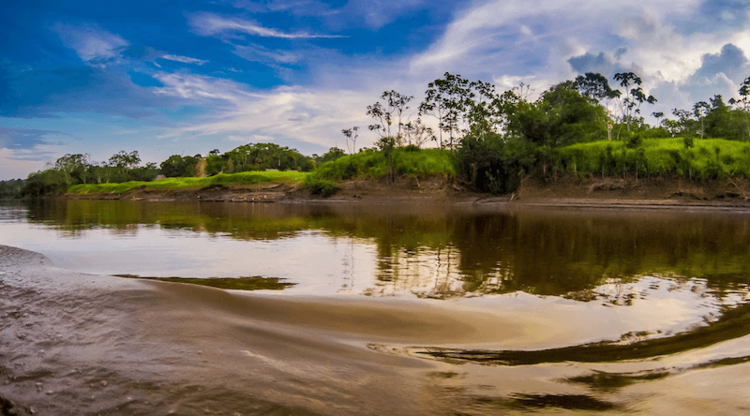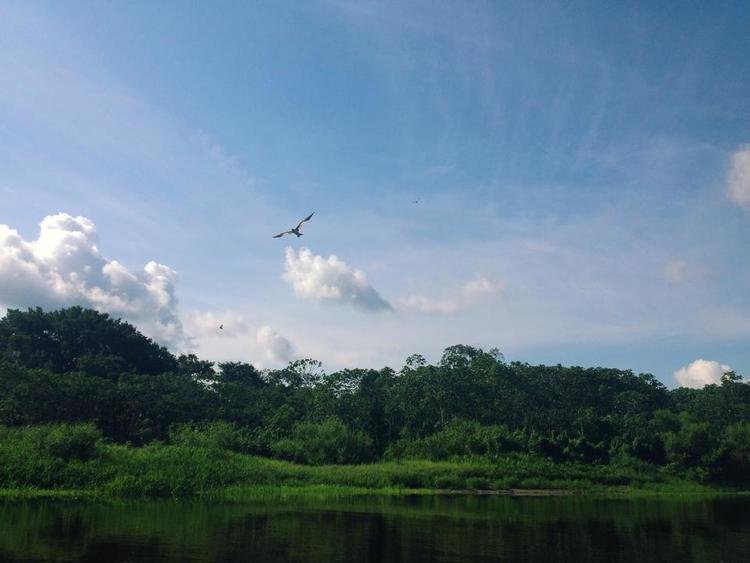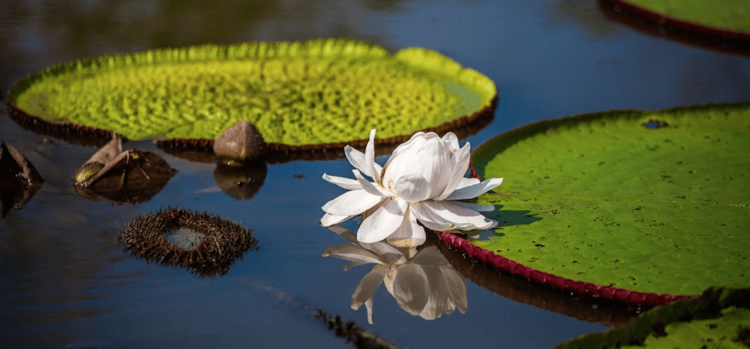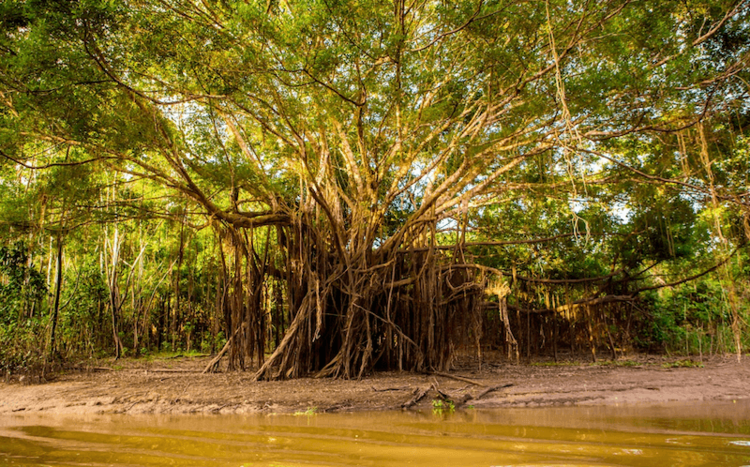
- Size
Even today, the full scale of the Amazon Rainforest remains truly mind-boggling. It graces nine different South and Central American countries including Peru, Venezuela and Bolivia, with the majority (60%) of its magnificent sprawl lying within the expansive borders of Brazil. All in, it amounts to roughly 3.2 million square miles of continuous forest – in other words, around a third of the total land size of the USA (including Alaska and Hawaii). That's pretty big!
Plant Life
Incredibly, this one gigantic expanse of greenery accounts for some 20% of the world’s entire allocation of natural forest. It’s home to an estimated 40,000 plant species, including 16,000 native tree types, with new ones still being discovered on a regular basis. Indeed, 21st-century studies have shown that a single square kilometre of Amazon Rainforest can contain upwards of 90,000 tonnes of living plants (equivalent to 7,000 double-decker buses!).

Greenhouse Effect
The Amazon Rainforest’s astonishing rates of photosynthesis means all those trees do an incredible job of keeping our planet’s air clear and filtered for us to breathe, as well as making a huge contribution to slowing down global warming. Sucking in vast quantities of carbon dioxide (largely man-made through the burning of fossil fuels), the forest converts this to oxygen and releases it back into the atmosphere. Additionally, it harnesses the remaining carbon for growth, which is then stored in the trees – thus deforestation is doubly damaging, as burning Amazonian plant life puts it right back into circulation, as well as reducing the number of trees left to absorb it in future.
- Biodiversity
In addition to the staggering diversity of plant life housed in the Amazon Rainforest, it’s also the single most important and teeming habitat for animal life on Earth. Over 30% of all identified species call these jungles home, including 2.5 million insect classifications and a fifth of all known species of birds. Many are unique to this environment, and all are by turns beautiful, bizarre and astonishing: the Amazon Basin is host to everything from electric eels and vampire bats to jaguars, snakes and sloths. In terms of wildlife welfare and habitat, the Amazon Rainforest is truly the priceless jewel in our planet’s crown.

- Water
It’s hardly a surprise to hear that rainforests are positively sloshing with life-giving water, and this one holds more than most: up to a fifth of the world’s fresh water, in fact, with the Amazon River alone winding for upwards of 4,000 miles through these vast, lush jungles. The mind-blowing quantities of h2O falling from the sky are just the beginning of the Amazon’s central role in the global water cycle, though – once again, it’s those trees that really do the bulk of the work. A single 98-foot tree can guarantee the evaporation of 79 gallons of water back into the atmosphere every day, having a dramatic effect on weather systems around the world and contributing hugely to the continued biodiversity of our planet.
- Dust & Fertilisation
Slightly more surprising, perhaps, is the fact that dust also plays an equally central role in the general health and wellbeing of such an inherently moist habitat. Plentiful supplies of fresh dust and phosphorous in the topsoil are pretty much just as crucial for long-term fertilisation and sustained plant growth as water. Amazingly, the main supplier to the Amazon Rainforest is on another continent entirely: it’s the Sahara desert in Africa. Last year, NASA satellite imaging tracked a three-dimensional model of vast dust clouds making their trans-Atlantic journey, mapping an extraordinary natural export/import process from one of the planet’s most barren expanses to one of its most fertile.

- Population
Among all the teeming wildlife of the Amazon Rainforest, it’s easy to forget that humans are also native to these lush jungles – but, in fact, the rainforest’s 21 million permanent inhabitants form a population roughly equal to that of London, New York and LA combined. Indigenous territories can actually be found in a little over 20% of the Amazon’s full span, including some major conurbations such as Manaus (2m people) and Belém (1.4m). There are also a great many smaller and more isolated communities, where unparalleled knowledge of local wildlife, plant cultivation and medicine continues to inform current scientific investigation of this incredibly rich habitat.
- History of Human Occupation
In 1542, the Spanish explorer and conquistador Francisco de Orellana completed the first known navigation of the full length of the Amazon River, which was for a brief time thereafter known as the Rio de Orellana. The journey relied heavily on drifting with river currents toward the open ocean, and was perhaps unsurprisingly a perilous and bloody undertaking (for both the struggling explorers and the unfortunate indigenous populations they clashed with). In fact, it wasn’t until 1638 that a Portuguese expedition under Pedro Teixeira became the first European party to complete the journey upriver – a far better-documented affair that dramatically increased knowledge of local customs and cultivation techniques, largely unrecorded at the time.

- Deforestation
As we know all too well, the horrifying rate of deforestation that the Amazon Rainforest has been subjected to for much of the 20th century has caused massive damage to the extent and health of the jungle, and continues to threaten its status as an impossibly valuable resource and habitat. The main threat, as noted in eco2greetings’ handy infographic, continues to come from cattle ranching – this industry alone was responsible for some 45% of total tree clearances between 2000-2005, at a staggering rate of 200,000 acres per day (an area roughly the size of Central Park). Large- and small-scale agriculture combined to worsen the problem by a further 40% in that time, with an estimated 15% of all Earth greenhouse gas emissions caused by aggressive deforestation.
- Future
Happily, some progress has been made in recent years towards slowing the destruction. Huge efforts are being made to curb illegal deforestation, with government and local communities working together under new initiatives in the worst-affected areas where up until very recently, vast swathes of plant life were regularly been hacked and burned to make way for ranches, farms or plantations. Steps being taken towards a more sustainable future in places like Paragominas are now being touted as potential models for larger-scale conservation across the Amazon Basin, where it’s absolutely imperative that swift and decisive action is taken to protect and preserve these unique resources for all who rely on them.
Source
Plagiarism is the copying & pasting of others work without giving credit to the original author or artist. Plagiarized posts are considered spam.
Spam is discouraged by the community, and may result in action from the cheetah bot.
More information and tips on sharing content.
If you believe this comment is in error, please contact us in #disputes on Discord
Hi! I am a robot. I just upvoted you! I found similar content that readers might be interested in:
https://www.rainforestcruises.com/jungle-blog/top-10-facts-about-the-amazon-rainforest-you-need-to-know
Dear friend join this group and get 40 to 50 upvotes daily. Guaranteed.
https://t.me/joinchat/F5AzkgzQv5FIa3Loj_1hkw